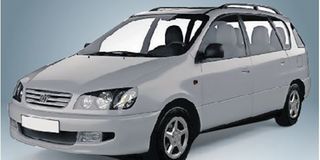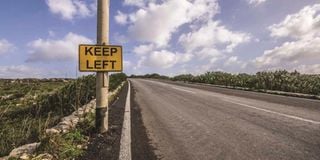What are the pros and cons of a Toyota Picnic engine 1AZ-FE 2000cc?

Toyota Picnic.
Hello, I would like to know the pros and cons of a Toyota Picnic engine 1AZ-FE 2000cc. Kindly let me know its fuel economy compared to, say, Toyota Wish 1800cc, acceleration and toggle issues, as well as the current resale value of the 2003 model.

Toyota Picnic engine.
Thanks, Kuthe
The Picnic belongs to the same family group as the Toyota Ipsum and Avensis Verso, and precedes the slightly enlarged Noah, Voxy etc. Yours is from the range produced between 1995 and 2010, with an upgrade in 2001.
All are compact ‘people movers’, so they have engines tuned for competence, reliability, longevity and economy – and not for exceptional power and pace.
In line with their target market, their trim sophistication is moderate but safety ranks high.
There are minor variations in the fuel economy of different engine sizes and generations and gearbox options, but these are far smaller than the variations caused by different driving styles, usage patterns, road and load and traffic conditions as well as maintenance disciplines.

Toyota Picnic.
Even the official consumption figures (which have little to do with real life), acknowledge that the Picnic, and all its cousin-brothers, “can” achieve up to 20+ km per litre in supremely economical conditions, and “can” be driven aggressively enough in extremely uneconomical conditions to achieve less than 2 km per litre (sic).
So how and where you drive and the condition of your car are many times more significant than the academic numbers you will find on spec sheets.
Broadly, you should get at least 10 km per litre in general use, and up to 15 km per litre on open highway journeys.
The “acceleration and toggle issues” you mention need to be more specific for me to hazard a guess at cause or cure, but on colloquial evidence, anything not quite right with the accelerator or idling or pick-up is most likely to stem from the throttle mechanism (adjustment) or the throttle body (which can get blocked and may simply need to be cleaned). There are some contemporary products which can assist that process, and no doubt some jua kali methods, too.
A quick browse of the internet “showrooms” suggests a 2003 Picnic is worth about Sh500, 000, or somewhat higher or lower depending on its condition. That asking price on a mid-size car nearly 20 years old is a complement to its reputation and popularity. Bear in mind that is not the price of the car, it’s the price of what is left of the car.
Keep left, keep going or get off the road…

On dual-carriageways (usually inter-city arterial highways), the principle is to motor in the left-hand.
Hello Gavin,
I have enjoyed reading your column for many years. In fact, today I quoted your mantra "Keep Left, Keep going or Get Off the Road!". As happens in golf, which I write about, every year a new cohort of drivers joins the melee that is driving in Kenya, so, we need to repeat the sermon over and over again.
To many on our Roads ‘keep left’ needs to be explained. They think three lanes in heavy Kenyatta Avenue/Uhuru Highway traffic is the same as three lanes on the fast-paced Thika Road at Ruiru. “Nikishika laini, sitoki”, is the mantra of a road hog.
Mike K
New cohorts are certainly a very real issue in this and many other respects. The hope must be that the old cohorts who have taken the “Keep Left, Keep Going or Get Off the Road” mantra to heart are now at least setting a better example for the newbies to follow (observation of others is a key learning tool).
The issue here is the difference between “multi-lane one-way streets” (that allow turns to the right at junctions and roundabouts) and fully fledged “dual carriage expressways” (which should have no right turns either entering or leaving or crossing the stream). Any change starts on a slip road…to the left. This is not a Kenya quirk, it is a fundamental principle of traffic flow and safety globally.
On multi-lane one-way streets (usually urban with heavy traffic), the rule is to choose your lane depending on the direction you will take at the next junction. Generally, the centre lane if you are going straight on, the left lane if you are turning left and the right lane if you are turning right. The correct choice is based on that alone and not, as many people seem to think, on which lane has the shortest queue.
On dual-carriageways (usually inter-city arterial highways), the principle is to motor in the left-hand (also referred to as the “near-side”) lane all the time…unless you are overtaking. And once you have overtaken, to return to the left lane so other vehicles can overtake you.

And once you have overtaken, return to the left lane so other vehicles can overtake you
This protocol is so important to traffic flow and safety that it definitely warrants repeating. The Keep Left, Keep Going or Get Off the Road mantra (which is the definition of a “Clearway”) also applies to single lane contraflow roads, and even when they have a “climbing” or “overtaking” lane.
But there are several agencies other than newspaper columns where that should be stressed, too. And first. And most.
Compliance
First, the people who design roads should ensure that compliance with the principles is physically possible, especially slip roads of adequate length for feeding into and out of the stream.
Second, the people who signpost and mark roads should ensure that they provide clear and accurate information on what compliance requires in relevant or ambiguous locations.
Third, driving instructors should be teaching the Clearway principle and the distinction between multi-lane one-way streets and dual carriageways as part of a compulsory syllabus. That syllabus should be made public.
Fourth, driving test examiners should ensure that L-plate candidates have learned those lessons, and use a red stamp marked FAIL if they have not.
Fifth, there needs to be a Highway Code, comprehensive and readily available to all new (and old) drivers, and all traffic planners, road designers, markers, law enforcers, and court officials, which explains these and all the other protocols which are essential to basic competence in any of those fields. Without those elements, media efforts are on a mission impossible.
Test yourself with this one: is it an offence to cross a solid yellow line?
If your answer is an unequivocal “Yes” (the traffic police and, by extension, the courts, seem to think it is) then your knowledge is incomplete.
Any court adjudicating a charge of “crossing a solid yellow line” is entitled (perhaps even obliged) to instantly dismiss the case. That is because the correct answer to the question is “No”…unless the action was done dangerously, recklessly or without due care and attention. One of those qualifiers should be part of the charge and it is (or should be) incumbent on the police to prove it. Anomalously, that last bit is not too difficult. Kenya’s Evidence Act says that courts must (may?) accept as “fact” anything two policemen claim to be true.
Perhaps we should look for two policemen who would report speed bumps that do not comply with size, shape and marking standards, or yellow lines painted in the wrong place…and so on. And on.
A world of wonders below the tarmac…

Potholes.
We have more and more good-looking tarmac roads these days, but many of them seem to break up within months of construction and require repair over and over again. Are we using the wrong tarmac?
Good roads are built with a deep foundation of hard and insoluble rock, embedded to ensure a stable and inflexible base.
On top of this, there are layers of progressively finer material, compacted to a consistent and fearsome hardness, and shaped so rainwater flows off immediately and is carried away by adequate side drains. That’s a road. It is the quality of that work which determines its inherent strength and durability.
Any such road then may or may not be covered with an additional “running surface” or “wearing course” of tarmac. The main job of this black-top is to protect the road - from rain, which could seep into the under layers and damage their integrity, say make them soft or allow them to move, and from the scrub of tyres which could grind a dirt surface into loose powder (less traction, dusty, and more prone to erosion by wind, wear and water.)
Now, if the structure of the road is designed robustly enough for the weight and volume of traffic it will carry and it is constructed perfectly, compacted to correct and equal hardness, and it is then covered by a properly mixed and applied waterproof and wearing layer of tarmac with the right “crown” shape and side drains, it will be smooth, grippy, dust-free and last for ages.

Engineers fill potholes on a road.
No road achieves that degree of perfection everywhere. Even the best will have areas where the cohesion, compaction and stability varies, however slightly. After prolonged use (and/or excessive loading), those variations will allow the tarmac layer to distort and perhaps split, with a danger that rain will now get through to the road’s structure and inflict deeper damage. The water that goes deep acts like a lubricant, dissolving fine materials and causing larger foundation rocks to move. The shape and hardness of the foundations is no longer consistent or solid enough, so the top layer will “bend” more severely and in more places. The waterproof surface will crack and split. More water will seep through into the base. And so on.
Fortunately, after more than 100 years of experience in building and using tarmac roads, engineers can not only read the warning signs well in advance, but also assess exactly what and where the weakness is. Covering up the symptoms will at best be temporary if the underlying weakness is not rectified. The defects will destroy the patch just as surely as they destroyed the original surface.
Road Repair means spotting the surface symptoms promptly, immediately protecting a suspect surface with chip and spray, identifying the underlying weakness, fixing the root cause before more consequential damage is done, and restoring the original surface. This is by far the most cost-effective way to maintain good roads, especially if the action is taken before a pothole is created and before a rainy season (not after it).
Another method of building roads which initially looks good and has much lower construction cost, but with very different subsequent results, first designs a road that is not deep-down strong enough for the traffic it will carry, and then engages a contractor/engineer combination which takes cost-saving short cuts on both the materials and processes. Any step-by-step quality testing is either overlooked or ignored. Drainage shortfalls allow standing water to undermine the foundations from the sides.
Next, it does not respond to early symptoms of weakness, like a split in the tarmac, until tyres and the weather have thumped the defect into the size and shape of a proper pothole which allows even more rain to get into the underlying structure, guaranteeing more extreme and extensive substrate damage. When the surface is finally patched, the underlying weakness is not fixed, and the repair material is not thoroughly bonded, not adequately compacted, and not made level. A patch that is also a bit of a bump will suffer hugely increased hammering from every tyre that passes over it.





